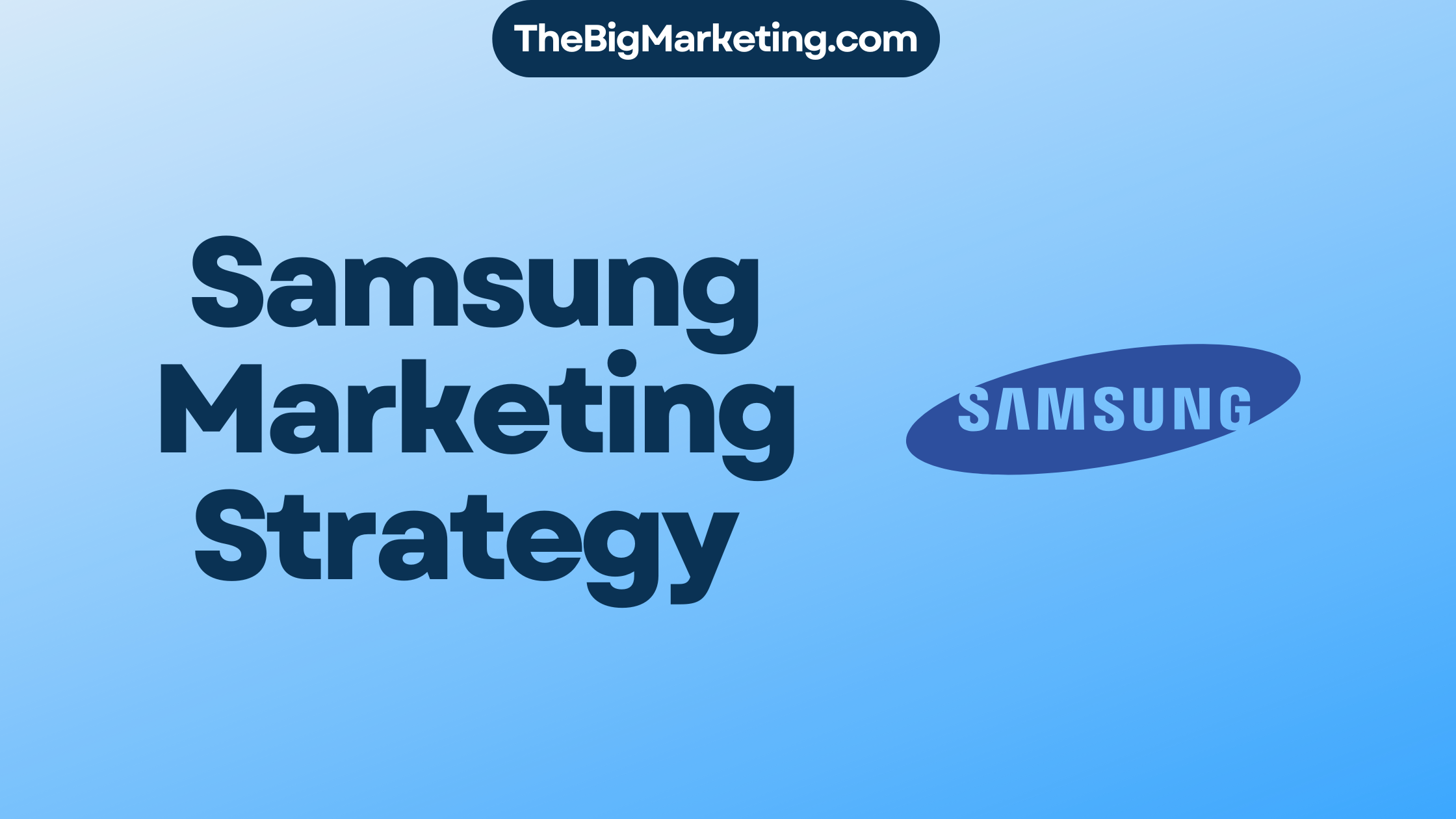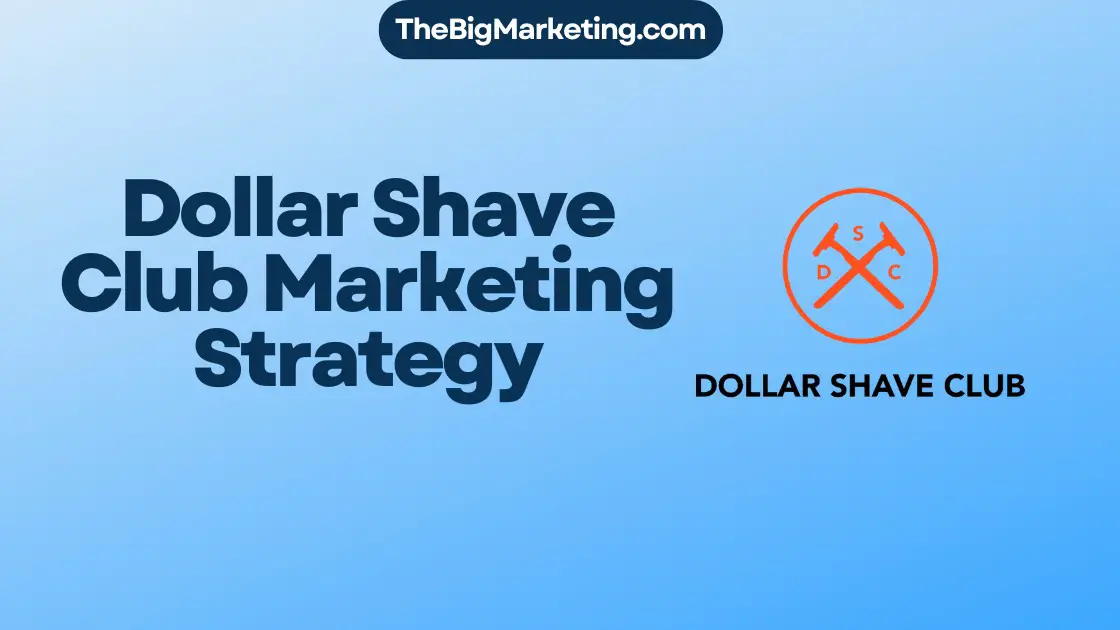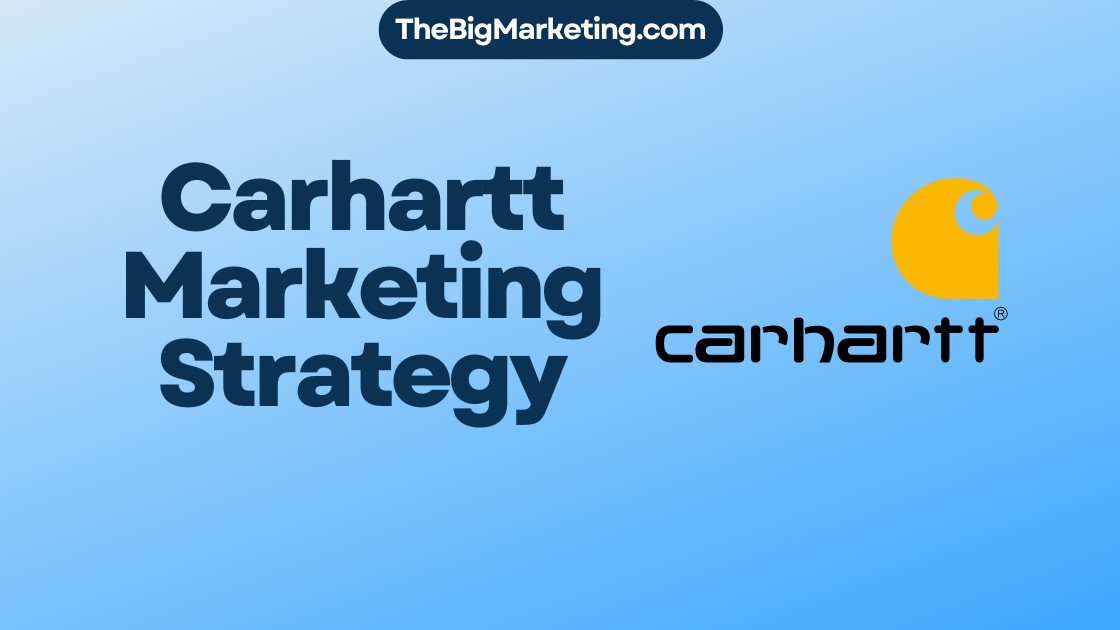In a rapidly changing marketing landscape, tech startups need to adopt effective marketing strategies to maximize their growth potential. The year 2024 brings new opportunities and challenges for startups, requiring them to stay ahead of the curve by leveraging the latest digital marketing tactics, growth hacking techniques, and startup branding ideas. To thrive in this competitive environment, tech startups must embrace online advertising strategies, invest in SEO for tech startups, and implement social media marketing for tech companies. In addition, content marketing tips and paid search campaigns can help startups achieve their marketing goals and gain a competitive edge in the market.
Every tech startup needs a comprehensive marketing strategy that aligns with their business objectives and target audience. By implementing these strategies, startups can effectively reach their target audience, establish their brand presence, and drive sustainable growth.
Key Takeaways:
- Digital marketing tactics and growth hacking techniques are crucial for tech startups to thrive in 2024.
- Startup branding ideas and online advertising strategies are essential for establishing a strong brand presence.
- SEO for tech startups plays a vital role in improving search engine rankings and driving organic traffic.
- Social media marketing for tech companies enables startups to engage with their target audience and build brand loyalty.
- Content marketing and paid search campaigns are effective in generating leads and increasing conversions.
Artificial Intelligence (AI) In Marketing
Artificial Intelligence (AI) has revolutionized the marketing landscape, offering new opportunities for businesses to streamline their operations and make data-driven decisions. AI-powered predictive analysis, generative AI, and chatbots have become essential tools for marketers looking to enhance efficiency and deliver personalized experiences to their customers.
Predictive analysis, one of the key applications of AI in marketing, leverages advanced algorithms to analyze historical data and forecast future trends. By gaining insights into customer behavior and preferences, businesses can make informed decisions about their marketing strategies and create targeted campaigns that drive results.
Generative AI, another powerful AI technique, enables marketers to automate content creation. Whether it’s generating product descriptions, blog posts, or social media updates, generative AI can save time and effort while maintaining quality.
Chatbots, powered by AI, are revolutionizing customer service and support. These virtual assistants can communicate with customers in a conversational manner, addressing their queries and providing personalized recommendations. As AI continues to evolve, chatbots are becoming more advanced, offering a seamless and efficient customer experience.
Integrating AI with operations and providing clear guidelines for its use is essential for organizations. By incorporating AI into various marketing processes, businesses can optimize their workflows, allocate resources to more creative and value-added tasks, and free up time for employees to focus on strategic initiatives.
Maximizing Lean Budgets
For startups operating with limited marketing budgets, it is essential to make the most out of every dollar spent. By employing cost-effective strategies and leveraging available resources, startups can maximize their marketing potential without breaking the bank.
During uncertain economic times, startups must be resourceful in their marketing efforts. Rather than relying solely on expensive advertising campaigns, there are several free PR tactics that can generate valuable exposure and brand awareness.
Reporter pitching is a powerful tool that allows startups to proactively reach out to journalists and pitch their story. By crafting a compelling narrative and targeting reporters in relevant industries, startups have the opportunity to secure media coverage that can greatly amplify their reach and increase credibility.
Social media campaigns are another effective way to gain traction without spending a fortune. By consistently creating engaging content and strategically using platforms such as Facebook, Instagram, and Twitter, startups can organically grow their audience, drive website traffic, and generate leads.
In addition to online initiatives, startups should also take advantage of public speaking opportunities and networking events. These platforms provide invaluable exposure to key stakeholders, potential investors, and industry influencers. By showcasing expertise and building relationships, startups can attract attention, establish credibility, and create opportunities for collaboration.
Another cost-effective strategy is hiring fractional CMOs (Chief Marketing Officers). Fractional CMOs are experienced marketing leaders who work on a part-time basis to provide strategic guidance and support. This enables startups to access high-level marketing expertise without incurring the full cost of a full-time executive. Fractional CMOs can help startups optimize their marketing strategies, allocate resources effectively, and achieve maximum results within their lean budgets.
| Benefits of Maximizing Lean Budgets | Strategies | Explanations |
|---|---|---|
| 1 | Free PR Tactics | Reporter pitching, social media campaigns |
| 2 | Public Speaking Opportunities | Showcase expertise, attract attention |
| 3 | Networking Events | Build relationships, create collaboration opportunities |
| 4 | Fractional CMOs | Access marketing expertise, optimize strategies |
Providing Value For Data
In an era where data privacy is a major concern for customers, marketers must prioritize transparency and value in data collection. By offering loyalty programs that provide discounts, special access, and exclusive experiences in exchange for data, businesses can create deeper customer engagement and incentivize revenue-generating activities.
Data-driven loyalty programs offer a win-win situation for both businesses and customers. Customers feel valued and rewarded for their participation, while businesses gain access to richer data profiles that can inform targeted marketing strategies and personalized experiences.
Transparency is key in building trust with customers. Brands that openly communicate their data collection practices, highlighting how customer data is used to enhance their experience and provide valuable benefits, can foster a sense of trust and loyalty.
When implementing loyalty programs, businesses should consider the following:
- Clearly communicate the benefits and rewards offered within the loyalty program
- Provide transparency on how customer data will be collected, stored, and used
- Create a seamless and user-friendly process for customers to join and participate in the program
- Regularly communicate with program members to keep them engaged and informed of new offers or experiences
By providing value for data and maintaining transparency, businesses can develop stronger relationships with their customers and gain a competitive edge in the market.
Example of a Loyalty Program:
Let’s take the example of XYZ, a leading online retailer. XYZ offers a loyalty program called “VIP Access” where customers can earn points for every purchase they make. These points can be redeemed for discounts on future purchases, exclusive access to pre-sales and new product launches, and special promotions.
As part of the “VIP Access” program, XYZ collects data on customer preferences, purchase history, and demographic information to better understand their target audience. This data enables XYZ to personalize product recommendations, send tailored offers, and create a more personalized shopping experience.
The table below showcases the various benefits and rewards offered through XYZ’s loyalty program:
| Reward Level | Benefits |
|---|---|
| Gold | 10% off on all purchases, exclusive access to VIP sales |
| Platinum | 15% off on all purchases, free express shipping, early access to new product launches |
| Diamond | 20% off on all purchases, VIP customer support, invitation to exclusive events |
To join the “VIP Access” program, customers simply need to create an account on XYZ’s website and opt-in for the loyalty program. They will then start earning points with every purchase made. XYZ also sends regular email updates to program members, informing them of new rewards, exclusive discounts, and upcoming promotions.
By implementing a loyalty program that provides value for data, XYZ has been able to build a loyal customer base, drive repeat purchases, and gain valuable insights to enhance their overall business strategy.
Voice Search Or Enabled Experiences
With the rise of voice-activated smart devices, voice search has become more prevalent. Marketers can optimize their content by using natural language keywords and a question-and-answer format. Additionally, it is important for e-commerce marketers to ensure their stores can support voice-activated shopping features and consider creating conversational ads on smart speakers.
- Utilize natural language keywords to improve visibility in voice search results.
- Adopt a question-and-answer format to align with the conversational nature of voice queries.
- Ensure e-commerce platforms are equipped with voice-activated shopping features for a seamless user experience.
- Create conversational ads for smart speakers to engage users in a more interactive and personalized way.
Community Building And Bringing People Back Together
As people seek a sense of belonging and community, brands and businesses can act as bridges by bringing people together around common interests or missions. Through community building efforts, brands can foster a sense of belongingness and create a supportive environment where individuals can connect and engage with like-minded peers.
Community building not only benefits individuals by providing opportunities for social interaction and networking, but it also plays a crucial role in brand development and communications. By curating communities that align with their brand values, businesses can strengthen their brand identity and establish deeper connections with their target audience.
Community Building Strategies
There are various strategies that brands can implement to facilitate community building:
- Organizing conferences and events: Hosting conferences and events centered around specific themes or industries is an effective way to bring people together. These gatherings provide opportunities for networking, knowledge sharing, and building connections.
- Supporting music festivals and parades: Sponsoring or participating in music festivals, parades, and other cultural events can create an inclusive environment that celebrates diversity. Such events bring people together, fostering a sense of unity and belongingness.
- Online communities and forums: Creating online platforms where individuals can connect, share ideas, and discuss common interests is another effective community building strategy. These platforms enable ongoing communication and engagement, transcending geographical barriers.
By actively engaging with their communities, brands can establish themselves as key players in their respective industries, gaining the trust and loyalty of their audience. This opens up opportunities for collaboration and co-creation, further strengthening the bond between the brand and its community.
| Benefits of Community Building | Examples |
|---|---|
| Increased brand loyalty | An online gaming company creates a dedicated community platform where players can connect, share experiences, and provide feedback. The community fosters a sense of belongingness, leading to increased player loyalty and advocacy for the brand. |
| Brand advocacy | A cosmetic brand organizes local makeup workshops, inviting beauty enthusiasts to learn new techniques and connect with each other. By fostering a community of makeup lovers, the brand gains advocates who share their positive experiences and recommend the brand’s products to others. |
| Market insights | A technology company creates an online forum where developers can exchange ideas and discuss emerging trends. By actively participating in the community and listening to the conversations, the company gains valuable insights into the needs and preferences of its target audience. |
Content Marketing
Content marketing is a fundamental aspect of growth strategies for startups. It involves creating and distributing valuable, relevant, and consistent content to attract and retain a clearly defined target audience. By implementing an effective content marketing strategy, startups can increase customer awareness, generate demand, and enhance the customer experience.
One key element of content marketing is providing value throughout the entire customer journey. Startups should focus on creating content that addresses the needs and pain points of their target buyers. By understanding buyer pain points and crafting content that addresses them, startups can establish themselves as trusted industry leaders and build credibility with their audience.
Another essential aspect of content marketing is incorporating input from industry leaders. Including insights and perspectives from industry experts in blog posts, articles, and other content pieces can add credibility and authority to the startup’s brand. This collaboration not only enhances the value of the content but also expands the reach and exposure of the startup’s content to a wider audience.
A data-driven approach is crucial for successful content marketing. Startups should leverage data to gain insights into their target audience’s preferences, behavior, and interests. This data can inform content creation, ensuring that it aligns with the audience’s needs and resonates with them. By creating data-driven blog posts and content pieces, startups can optimize their content strategy and deliver relevant and engaging content to their audience.

To illustrate the importance of content marketing, here is a table highlighting the benefits and impact of content marketing on startups:
| Benefits of Content Marketing for startups | Impact on Startups |
|---|---|
| Increased brand awareness | Expand reach and visibility in the market |
| Improved customer experience | Enhanced satisfaction and loyalty |
| Increased demand and leads | Drive sales and revenue growth |
| Establishment of thought leadership | Build credibility and authority in the industry |
By implementing a comprehensive content marketing strategy that focuses on customer experience, addressing buyer pain points, and incorporating insights from industry leaders, startups can effectively leverage content to drive awareness, demand, and growth.
Inbound Marketing/SEO
In today’s digital landscape, inbound marketing combined with SEO is a powerful strategy that can drive organic traffic and improve user experience. By focusing on keyword research, including long-tail keywords, and balancing SEO content techniques with user-friendly content that encourages backlinks, startups can effectively optimize their online presence and attract the right audience.
Keyword Research and Long-Tail Keywords
Keyword research is a fundamental aspect of SEO. Startups should invest time in understanding the keywords their target audience uses when searching for products or services similar to theirs. This research helps identify popular search terms and uncover long-tail keywords, which are more specific and targeted phrases that can yield higher conversion rates. Incorporating these long-tail keywords into website content, blog posts, and meta tags can boost search engine rankings and attract qualified traffic.
User Experience and SEO Content
While optimizing for search engines is important, it should never come at the expense of user experience. Well-structured and user-friendly websites not only keep visitors engaged but also contribute to higher search engine rankings. Startups should focus on creating content that provides value, solves problems, and addresses user needs. By delivering informative and engaging content, startups can improve bounce rates, increase time spent on site, and enhance overall user experience.
Backlinks and Organic Traffic
Backlinks are crucial for SEO success. They not only drive traffic to a startup’s website but also signal to search engines that the content is trustworthy and valuable. Startups should actively seek opportunities to build high-quality backlinks through techniques such as guest blogging, influencer collaborations, and partnerships with industry leaders. By establishing a strong backlink profile, startups can increase their website’s authority, visibility, and organic traffic.
Social Media Marketing
Social media marketing has become a cornerstone of digital marketing strategies for startups, offering a cost-effective way to generate leads and increase engagement. By leveraging platforms like Facebook and understanding the intricacies of Facebook marketing funnels, startups can create targeted campaigns that align with their marketing objectives.
One crucial aspect of social media marketing is identifying the target persona for your product or service. By understanding the preferences, demographics, and behaviors of your ideal customer, you can tailor your content and advertising to effectively reach and resonate with them.
Facebook Ad Manager plays a significant role in executing successful social media campaigns. By utilizing tools such as the remarketing pixel and audience targeting capabilities, startups can reach a highly relevant audience and optimize their campaign performance. The remarketing pixel allows you to track website visitors and deliver targeted ads to them as they browse Facebook, increasing the chances of conversion.
Setting clear campaign objectives is essential for measuring the success of your social media marketing efforts. Whether it’s driving website traffic, generating leads, or increasing brand awareness, defining your objectives will help you track and evaluate the effectiveness of your campaigns.
Of course, a well-planned budget is crucial for any social media marketing strategy. Facebook offers various budgeting options to fit your needs, including daily and lifetime budgets. Determining the right budget allocation and monitoring the performance of your campaigns will ensure you maximize your return on investment.
Benefits of Social Media Marketing
- Increased brand visibility and recognition
- Targeted audience reach and engagement
- Lead generation and customer acquisition
- Opportunities for customer feedback and interaction
- Driving website traffic and sales
In conclusion, social media marketing, particularly on platforms like Facebook, provides startups with an effective way to reach and engage their target audience. By leveraging Facebook marketing funnels, identifying the target persona, utilizing remarketing pixel and audience targeting, setting campaign objectives, and allocating a budget strategically, startups can optimize their social media marketing efforts and drive growth for their business.
Responsive Web Design, HTTPS, AMP
For startups aiming to deliver an exceptional user experience, it is crucial to implement responsive web design, ensure HTTPS security, and leverage AMP for faster loading times. These strategies not only enhance user satisfaction but also have a positive impact on search engine ranking and website performance.
Responsive Web Design
Responsive web design is essential in today’s mobile-driven world. With the increasing use of smartphones and tablets, it is crucial for startups to create websites that adapt seamlessly to different screen sizes and resolutions. By implementing responsive web design, startups can provide a consistent user experience across various devices, ensuring that their content is easily accessible and readable for mobile users. This enhances engagement and encourages users to stay longer on the website, resulting in lower bounce rates and increased conversion rates.
HTTPS for Security
Security is a top priority for both users and search engines. By implementing HTTPS (Hypertext Transfer Protocol Secure), startups can ensure that their websites are encrypted and secure. This is particularly important when handling sensitive user information, such as personal details or payment transactions. Additionally, search engines like Google prioritize websites with HTTPS in their search rankings, providing an additional boost to a startup’s visibility and credibility.
AMP for Fast-Loading Pages
In today’s fast-paced digital world, users expect instant access to information. Startups can meet this demand by incorporating AMP (Accelerated Mobile Pages) into their website strategy. AMP is a framework that allows websites to load quickly on mobile devices, providing a seamless browsing experience. By implementing AMP, startups can reduce page load time, decrease bounce rates, and improve overall user satisfaction. This not only enhances the user experience but also contributes to improved search engine rankings, as search engines prioritize fast-loading pages in their algorithms.
To optimize user experience, startups should invest in responsive web design, ensure HTTPS security, and leverage AMP for fast-loading pages. By implementing these strategies, startups can deliver a user-friendly website that performs well across mobile devices, enhances search engine ranking, and maximizes customer engagement.
Conclusion
In conclusion, the key to success for tech startups in 2024 lies in implementing effective growth marketing strategies. By embracing artificial intelligence (AI) in marketing, startups can leverage predictive analysis, generative AI, and chatbots to enhance efficiency and focus on value-added tasks. Additionally, maximizing lean budgets through free PR tactics, social media campaigns, and fractional CMOs can help startups make the most of their limited resources.
Providing value for data is crucial in today’s data-conscious world. By being transparent about data collection and offering loyalty programs that incentivize customers with discounts, special access, and exclusive experiences, startups can build trust and engage customers on a deeper level. Optimizing for voice search by using natural language keywords and creating voice-activated shopping features can also give startups a competitive edge in the evolving marketing landscape.
Furthermore, community building and bringing people back together around common interests or missions can help startups build a sense of belongingness and develop their brand identity. By implementing content marketing strategies that provide value throughout the customer journey and addressing buyer pain points, startups can attract and retain their target audience. Inbound marketing and SEO techniques can drive organic traffic and improve user experience, while social media marketing offers a cost-effective way to generate leads and increase engagement.
Responsive web design, HTTPS, and AMP are essential for enhancing user experience on mobile devices and improving search engine rankings. Finally, leveraging customer psychology and understanding their behaviors and preferences can help startups tailor their marketing efforts for maximum impact. By implementing these growth marketing strategies, startups can accelerate their growth, engage their target audience, and stay ahead in the competitive landscape of 2024.
FAQ
What are some effective marketing strategies for tech startups in 2024?
Some effective marketing strategies for tech startups in 2024 include leveraging artificial intelligence (AI) in marketing, maximizing lean budgets, providing value for data, optimizing for voice search, community building, content marketing, inbound marketing/SEO, social media marketing, responsive web design, and leveraging customer psychology.
How can tech startups integrate artificial intelligence (AI) into their marketing strategies?
Tech startups can integrate artificial intelligence (AI) into their marketing strategies by utilizing AI tools such as predictive analysis, generative AI, and chatbots. It is important for organizations to integrate AI with their operations and provide guidelines for its use. By embracing AI, companies can enhance efficiency and allocate resources to more creative and value-added tasks while still utilizing human efforts.
What can tech startups do to maximize their marketing efforts with limited budgets?
Tech startups with limited budgets can maximize their marketing efforts by using free PR tactics such as reporter pitching, social media campaigns, and networking events. Another cost-effective strategy is hiring fractional CMOs, experienced marketing leaders who can provide strategic guidance on a part-time basis and help extend the marketing budget.
How can tech startups provide value for data while respecting customer privacy?
Tech startups can provide value for data while respecting customer privacy by being transparent in their data collection practices. Loyalty programs that offer discounts, special access, and exclusive experiences in exchange for data can engage customers on a deeper level and incentivize revenue-generating activities.
How can tech startups optimize their marketing strategies for voice search?
Tech startups can optimize their marketing strategies for voice search by using natural language keywords and a question-and-answer format in their content. Additionally, it is important for e-commerce marketers to ensure their stores can support voice-activated shopping features and consider creating conversational ads on smart speakers.
What can tech startups do to build a sense of community and bring people together?
Tech startups can build a sense of community and bring people together by acting as bridges and creating platforms for people to connect around common interests or missions. Successful community building not only positions brands as vital to their customers but also creates valuable pathways for brand development and communications.
How can content marketing help tech startups in their growth strategies?
Content marketing plays a crucial role in growth strategies for tech startups. To make the most of content marketing, startups should focus on providing value throughout the entire customer journey, addressing buyer pain points, and including input from industry leaders in their content.
How can tech startups leverage inbound marketing and SEO to drive organic traffic?
Tech startups can leverage inbound marketing and SEO to drive organic traffic by focusing on keyword research, including long-tail keywords, and balancing SEO content techniques with user-friendly content that encourages backlinks. Inbound marketing, combined with SEO, can improve user experience and attract more organic traffic to the startup’s website.
What are some effective social media marketing strategies for tech startups?
Social media marketing, particularly on platforms like Facebook, offers a cost-effective way for tech startups to generate leads and increase engagement. By identifying target personas and using Facebook Ad Manager effectively, startups can create targeted campaigns that align with their marketing objectives.
Why is responsive web design, HTTPS, and AMP important for tech startups?
Tech startups should prioritize user experience by implementing responsive web design, HTTPS for security, and AMP for faster loading times. These strategies contribute to a positive customer experience, higher search engine rankings, and increased engagement on mobile devices.
What are the key takeaways for effective marketing strategies for tech startups in 2024?
The key takeaways for effective marketing strategies for tech startups in 2024 include embracing AI, maximizing lean budgets, providing value for data, optimizing for voice search, community building, content marketing, inbound marketing/SEO, social media marketing, responsive web design, and leveraging customer psychology. By implementing these strategies, startups can accelerate growth, engage their target audience, and stay ahead in the competitive landscape.








